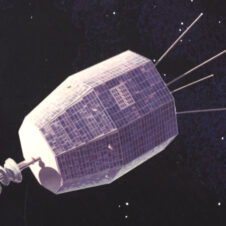Supercomputer to boost SKA chances
Researchers in Australia and New Zealand have been donated a high performance computing facility by IBM, boosting their chances of a successful bid for the $3 billion Square Kilometre Array (SKA) telescope.
International Centre for Radio Astronomy Research (ICRAR) at Curtin University researchers and counterparts at Victoria University of Wellington in New Zealand will use the computing facility to process data from the Murchison Widefield Array (MWA) radio telescope, a precursor instrument for the SKA telescope.
Victoria University radio astronomer Dr Melanie Johnston-Hollitt who chairs the New Zealand SKA Research & Development Consortium says the supercomputer is a massive boost for the MWA.
“New Zealand researchers and students will have the opportunity to contribute directly to the Murchison Widefield Array, the first time we’ve been involved in an official SKA ’precursor’. This is a significant step forward in New Zealand’s engagement in both radio astronomy and the SKA project and we are grateful to IBM for their support,” says Dr Johnston-Hollitt.
The SKA will be a new generation radio telescope 50 times more powerful than current instruments. It will be built in the Southern Hemisphere, either in Africa or Australia-New Zealand where the view of the Galaxy is the best and there is little radio interference. The decision on whether the joint Australia-New Zealand bid will host the SKA is expected in 2012.
The MWA is one of three official SKA ‘precursors’, medium scale instruments that will be used to explore and prove important technologies for the SKA. The MWA is the only SKA Precursor that operates at low radio frequencies.
The A$30m MWA radio telescope—currently under construction at the heart of the Australia-New Zealand SKA site in Western Australia, the Murchison Radioastronomy Observatory–is designed to probe the formation of the first stars and galaxies in the Universe, looking back billions of years in time to the so-called Epoch of Reionisation.
The IBM facility will help the MWA process data in real-time, forming images of the sky that will be used to measure the signals of interest.
Professor Steven Tingay, ICRAR Deputy Director, sees the links between Australia and New Zealand getting stronger in radio astronomy.
“This work builds on existing links between Australia and New Zealand in radio astronomy and the IBM facility will be a vital component of the MWA system. It will allow data from MWA to be processed which in turn will allow us to make new discoveries about the Universe. We’re delighted to be working with colleagues in New Zealand and IBM on this critical sub-system for the MWA.”
Chief Technologist of IBM New Zealand, and co-chair of the NZ SKA Industry Consortium (NZSKAIC) Dougal Watt, says, “This award is an important contribution by IBM towards research and development for SKA, one of the four biggest science projects of the century. IBM is excited to be working with the MWA project to understand and solve some key challenges these next-generation science instruments will generate.”
Dr Johnston-Hollitt sees the future of such collaborations between international researchers and industry to be fundamental to large international projects like the SKA.
“The way big research is being done is via collaboration between international teams of researchers from academia and industry and the SUR grant for New Zealand researchers for MWA epitomises this new approach. I hope this is the start of a fruitful collaboration between Victoria, the International Centre for Radio Astronomy Research and IBM.”
ICRAR/Curtin University and Victoria University in Wellington were donated the facility as part of an IBM Shared University Research grant.
Contact: Professor Steven Tingay
Phone: 08 9266 3516

